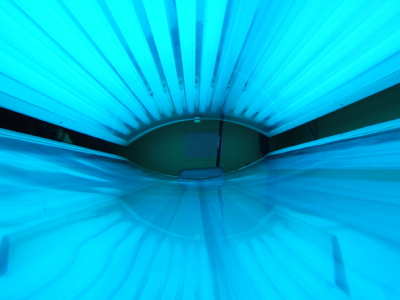Ultraviolet (UV) water purification systems are thought to offer the most cost-effective way of protecting residential drinking water against biological contaminants. UV purification systems can be used to protect against water-borne viruses, bacteria, molds and pathogenic disease-causing microorganisms such as giardia and cryptosporidium. Even viruses such as the hepatitis virus, which are known to be highly resistant to chlorine-treated water, can be relatively easily eliminated through UV treatment.

How UV Water Purifiers work
Ultraviolet (UV) light is invisible and is emitted by different light sources, including the sun. At certain intensities, UV light emits enough radiation to kill the DNA in bacteria and other microorganisms. An ultraviolet water purification system typically consists of a UV light source with an output of around 254 nanometers which produces radiation of a significantly greater intensity than the radiation produced by sunlight.
Buy Ultraviolet Water Purifiers Today On Amazon.com
The UV light source is mounted in front of a flow chamber through which water passes. The water is exposed to the UV light source as it passes through the chamber. Any harmful microbes and bacteria that are present in the water are rendered sterile by the exposure to the germicidal radiation.
UV radiation is so effective that it can eliminate up to 99.99% of bacteria and viruses, including those associated with water-borne illnesses such as Typhoid, Gastroenteritis, Hepatitis, Flu and Cholera. UV water purification can be used to treat water whether it’s from a municipal water supply, a drinking-water well, lake or a spring.
Limitations in UV Water Filters
As remarkable as the technology is, ultraviolet water purification by itself is not enough to render water completely safe for drinking purposes. That’s because UV radiation works only on microorganisms such as bacteria and viruses. UV light is of little use in eliminating other contaminants in water such as chlorine, heavy metals and VOC’s (Volatile Organic Compounds).
VOCs are toxic, man-made chemicals that leach into ground water during the manufacture of products such as paints, petroleum products and refrigerants. Getting rid of such contaminants requires other types of filtration such as Granular Activated Carbon (GAC) filters and Kinetic Degradation Fluxion (KDF) processes for removing contaminants such as lead, iron, mercury and chlorine from drinking water.
Advantages of UV water purifiers
One of the biggest advantages of using a UV water purifier is that it is very cost effective at killing a majority of the harmful microbes associated with most common water-borne illnesses. On average, home UV water purifiers start at just $250 for a relatively small point of use system and top out at around $1400 for a whole house system. The systems consume only as much energy as a 60-watt bulb. Importantly, UV water filters do not introduce chemicals in the water. As a result, the taste and color of the water remain virtually unaltered and there is also no danger of any harmful bi-products resulting from the use of UV filters. In addition, UV water purifiers are easy to install, are easy to maintain and do not damage septic tanks or plumbing.
Drawbacks of UV water sterilizers
The systems have a few disadvantages as well. UV water purifiers require electric power to run. While this is not a problem in developed countries, it can pose a challenge in developing nations, where electricity may not always be readily available, especially in rural areas. UV water purifiers also only work when the water is clear. The systems are not very effective when the water contains a lot of sediment or is muddy. In such situations, the water will need to be filtered first by other filtration systems, before it can be passed through a UV radiation process.
Significantly, UV rays are invisible to the naked eye. So it becomes very hard to determine if the UV system is still working, or when a lamp might need to be replaced. This can easily result in situations where a malfunctioning or ineffective UV system continues to be used for extended periods of time. This is one of the reasons why experts recommend replacing the lamp in a UV water purification system once every year. Beyond that period, the light produced by the lamp may not be of enough intensity to effectively destroy water-borne microbes.
Manufacturers of UV water purifiers
Several manufactures sell UV purifiers for residential water treatment purposes. The systems come with varying capabilities and prices and are designed to address a wide variety of residential water treatment needs. Some examples of manufactures in this space include Trojan, PurTest, Sterilight and ClearChoice. All of these vendors sell a range of systems starting with relatively small point-of-use systems to larger, whole-house UV water purifiers.
Trojan UVMax Model A for instance, is a 2 gallon per minute (GPM) point-of-use purifier that costs around $320 while its highest-end system, the Model F4 can treat up to 25 GPM and has a price tag of $1,120. One example of a mid-range system is PurTest’s PURPG-20, a $720 whole house water purifier capable of treating up to 20 gallons of water per minute. Sterilight meanwhile, offers one of the widest ranges of UV water filters with models starting at just $245 and going all the way to around $1500. ClearChoice’s 5-stage reverse osmosis system with UV filtration is one example of a water purifier that combines Thin Film Composite (TFC) reverse osmosis filtration, with an anti-microbial UV water sterilizer.
Given the range of products available, it can be challenging figuring out the right one to choose for a particular need. In general though, anyone considering a UV water purifier needs to pay attention to certain basics such as the radiation dosage offered by a specific model. NSF International, a standards development and product certification body recommends that the minimum safe dosage required for a home system is 40,000 nanowatts of UV light. A system’s ultraviolet transmittance capability or the capability of its ultraviolet light to penetrate water, is also another important consideration according to NSF.

4 Responses to Ultraviolet Water Purifiers